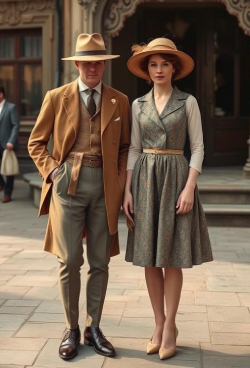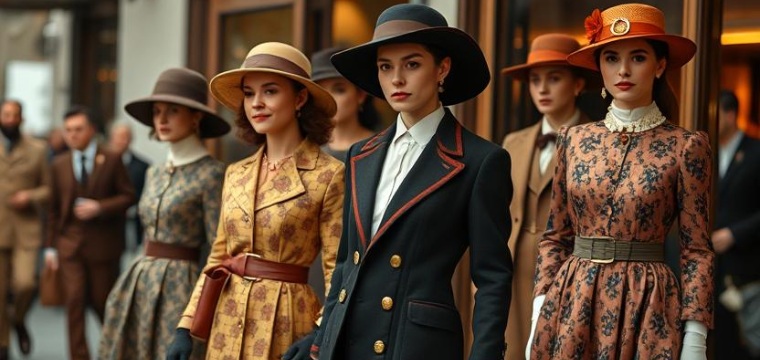Fashion doesn't enhance the body alone; It penetrates deeper into the heart and soul. Do you know that your appearance determines your mood, your ability to maintain eye contact, and your confidence level?
Researchers have been able to reasonably demonstrate the existence of an enclothed cognition, indicating that one's clothing influences their mental state and performance. Your fashion sense equally influences those around you. Read on as we explore the impact of fashion on self-esteem.
Pre-20th Century

Before the 20th century, there was a strong correlation between social status and fashion. A relatively wide gap existed between the dress of the nobility and that of peasants in most societies globally at the time.
In Ancient Egypt, wearing linen, gold, and eye makeup reaffirmed one’s place in society and closeness to the gods.
Nobles and wealthy individuals in medieval Europe wore elaborate and expensive dresses crafted from fine fabrics. They adorned themselves with embellishments such as jewels and embroidery to showcase their status. Their clothes were usually colourful, and the presence of bright hues indicated wealth. The materials for their clothes were velvets, furs, silks, and fine woolens.
The peasants were known to wear plain, functional clothing in natural colors, along with simple accessories. Those who were rich and powerful felt a lot of confidence and pride in their appearance.
For regular people, some often felt a sense of inadequacy and low self-esteem due to their appearance. Others simply accepted their simple dressing to be a result of their low standing in the social hierarchy.

20th Century
The turn of the 20th century revolutionized the fashion world, leading to a rise in self-expression through clothing. It became less about form and fabric and more about identity and social confidence, especially from the mid-20th century.
Various subcultures around the world used fashion to express their individuality and challenge traditional norms. Examples include punk fashion and hippie styles. Women also began to use bold colors and sharp suits to assert themselves in male-dominated spaces.
Throughout the 20th century, psychologists began to recognize the connection between certain attire and feelings of authority, rebellion, and other mental processes. The 20th century also saw several fashion designers build their brands and rise to fame. Here are some of the key designers in that era and what they were known for.
- Christian Dior (Introduction of A-line, zigzag line, Y-line, H-line silhouette)
- Tom Ford (Perfectionistic designs)
- Yves Saint Laurent (Power dressing for women)
- Christian Louboutin (Classic high heels with red soles)
- Calvin Klein (Simple and stylish dress designs)
21st Century and Beyond

To date, the 21st century has witnessed a more complex, digital, and personal impact of fashion on self-esteem. The internet has turned the world into a global village. Social media and globalization mean that people can see the latest trends in the fashion world anytime and anywhere.
Humanity has been ushered into a brand-driven and hyper-visual culture where there is a direct link between bodily image and self-worth. Celebrities are also influencing young people, promoting the idea that dressing like a star can promote one’s social value.
The explosion of Instagram, TikTok, and YouTube influencers in the 2010s has turned fashion into a 24/7 visual show. This development has both positive and negative psychological impacts.
On the positive end, there is a greater level of inclusivity and diversity. We are now starting to embrace the different cultural backgrounds, skin tones, and body types. Social media has also become a creative outlet for cultural exchange and storytelling. There is an increased awareness of ethical production, sustainability, and fair labor.
On the downside, social media places a lot of emphasis on unrealistic beauty standards that many people cannot attain. Due to this development, some people experience mental health issues like Fear Of Missing Out (FOMO), anxiety, and low self-esteem.
Final Thoughts
Before the 20th century, fashion mainly reflected one’s position in the social hierarchy. Today, that has changed. People use their hairstyles, clothes, and body accessories to speak volumes about their hearts.